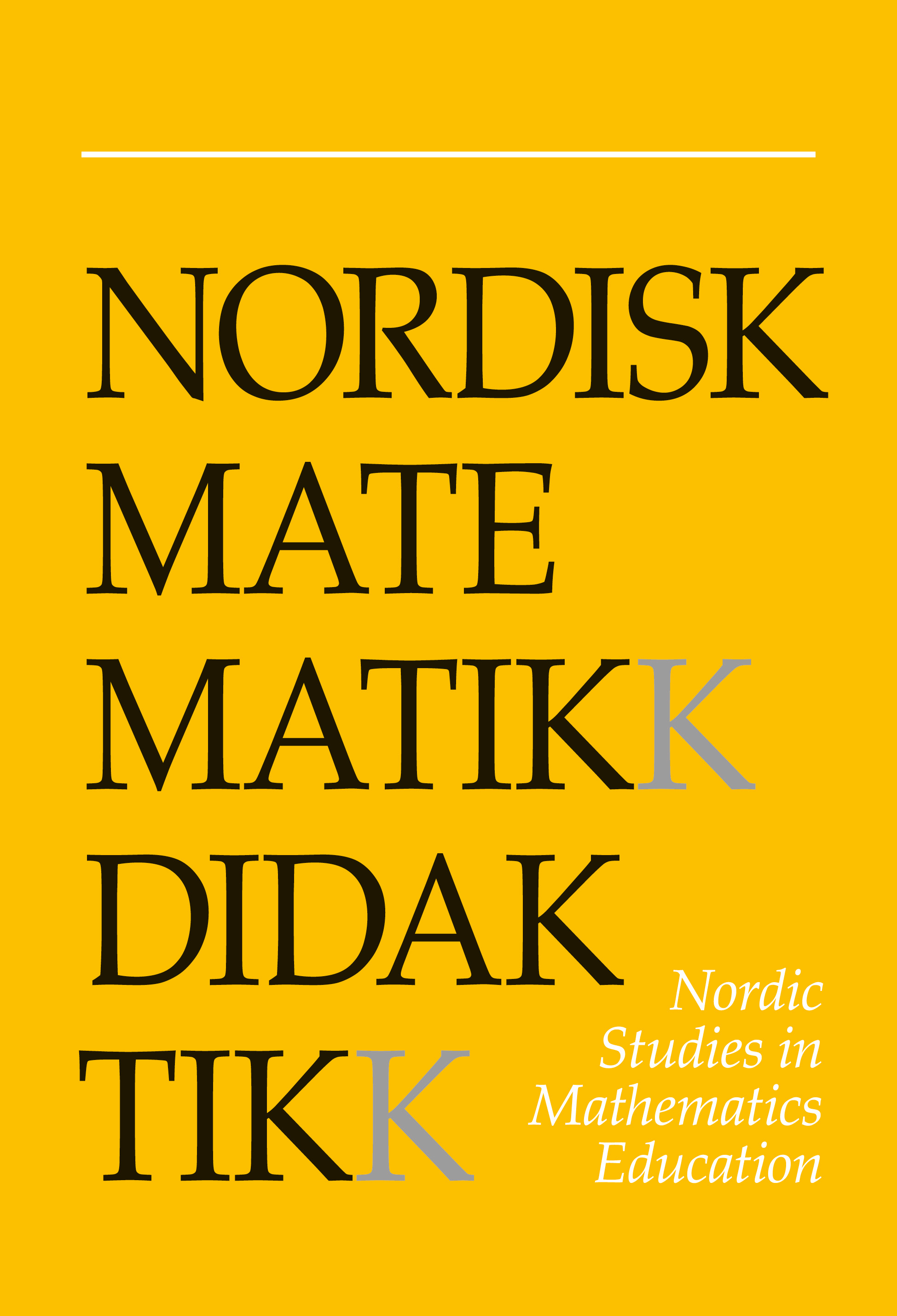Single-sex mathematics classes: Who benefits?
DOI:
https://doi.org/10.7146/nomad.v3i1.146153Abstract
A co-educational high school in Melbourne, Australia, introduced an innovative program of single-sex mathematics classes for grade 10 students. Of particular concern to the school was the impact of the program on enrolments in mathematics courses in grade 11. The requested evaluation of the program is reported in this paper. Students' and parents' reactions, the effects on students' achievements and their beliefs about themselves as learners of mathematics are presented. Implications of the findings and recommendations to the school for future action are discussed.
References
Ainley, J., & Sheret, M. (1992). Progress through high school: A study of senior secondary schooling in New South Wales. Hawthorn, Victoria: The Australian Council for Educational Research. Australian College of Education [ACE] News (1994). Growth still slow, ACE News, 13(4), 19.
Board of Studies [BOS] (1994). Statistical information: Victorian Certificate of Education -Assessment program 1993. Author.
Bornholt, L. J., Goodnow, J. J., & Cooney, G. H. (1988). Perceptions of achievement: The effects of gender, school type, and grade. (ERIC document number ED305989). Castles, I. (1993). Women in Australia. Canberra: Australian Bureau of Statistics. [Catalogue No. 4113.0].
Commonwealth Schools Commission (1987). A National policy for the education of girls in Australian schools. Canberra: Author.
Cox, P. (1993). Sex and CATs: Gender related CAT bias in VCE mathematics. In J. Mousley & M. Rice (Eds.), Mathematics: Of primary importance (pp. 139-144). Brunswick, Victoria: Mathematical Association of Victoria.
Dekkers, J., De Laeter, J. R., & Malone, J. A. (1991). Upper secondary school science and mathematics enrolment patterns in Australia, 1970-1989. Perth: Curtin University of Technology.
Foon, A. E. (1988). The relationship between school type and adolescent self-esteem, attribution styles, and affiliation needs: Implications for educational outcome. British Journal of Educational Psychology, 58, 44-54. https://doi.org/10.1111/j.2044-8279.1988.tb00877.x
Forgasz, H. J. (1993). Girls' attitudes in mixed and single-sex classrooms. Paper presented at ICMI 93 Study, Gender and Mathematics Education, Höör, Sweden, October 7-12.
Forgasz, H. J. (1994). Society and gender equity in mathematics education. Geelong, Victoria: Deakin University Press.
Gill, J. G. (1988). Which way to school? A review of the evidence on the single sex versus coeducation debate and an annotated bibliography of the research. Canberra: Curriculum Development Centre.
Grevholm, B., & Nilsson, M. (1994). Sweden. In L. Burton (Ed.), Who counts? Assessing mathematics in Europe (pp. 241-262). Stoke-on-Trent, England: Trentham Books
Hanna, G., Kündiger, E., & Larouche, C. (1990). Mathematical achievement of grade 12 girls in fifteen countries. In L. Burton (Ed.), Gender and mathematics: An international perspective (pp. 87-97). London: Cassell.
Jones, J. (1990). Outcomes of girls' schooling: Unravelling some social differences. Australian Journal of Education, 34, 153-167. https://doi.org/10.1177/000494419003400206
Leder, G. C. (1992). Mathematics and gender: Changing perspectives. In D. A. Grouws (Ed.), Handbook of research on mathematics teaching and learning (pp. 597-622). New York: Macmillan.
Leder, G. C. (1993). Teacher/student interactions in the mathematics classroom: A different perspective. In E. Fennema & G. C. Leder (Eds.), Mathematics and gender (pp. 149- 168). St. Lucia, Queensland: Queensland University Press.
Leder, G. C. (1994). Research in mathematics education: Constraints on construction? In G. Bell, B. Wright, N. Leeson, J. Geake (Eds.), Challenges in Mathematics Education: Constraints on Construction, Vol. 1 (pp.30-48). Mathematics Education Research Group of Australasia.
Marsh, H. W., Smith, I. D., Marsh, M, & Owens, L. (1988). The transition from single- sex to co-educational high schools: Effects on multiple dimensions of self-concept and on academic achievement. American Educational Research Journal, 25, 237-269. https://doi.org/10.3102/00028312025002237
Milligan, S., Thomson, K., & Ashendon & Associates (1992, January). Listening to girls: a report of the consultancy undertaken for the Review of the National policy for the education of girls, conducted by the Australian Education Council, 1991. Australian Education Council.
Ministerial Council on Education, Employment, Training and Youth Affairs (1994). Statistical annex: National report on schooling in Australia. Carlton, Victoria: Curriculum Corporation.
Ministry of Education and Science (1993). A review: The Swedish way towards a learning society. Stockholm: Author.
Regan, L. (cl992). The results of a survey of the attitudes of year 9 students and their teachers towards single-sex and mixed-sex classes in science or mathematics at three north coast high schools. Lismore, NSW: University of New England - Northern Rivers.
Rowe, K. J. (1988). Single-sex and mixed classes: The effects of class type on student achievement, confidence and participation in mathematics. Australian Journal of Education, 32(2), 180-202. https://doi.org/10.1177/000494418803200204
Teese, R. (1989). Australian private schools, specialization and curriculum conservation. British Journal of Educational Studies, 37(3), 235-252. https://doi.org/10.1080/00071005.1989.9973814
Victorian Curriculum and Assessment Board (1993). Statistical information: Victorian Certificate of Education - Assessment program 1992. Author.
Downloads
Published
How to Cite
Issue
Section
License

This work is licensed under a Creative Commons Attribution-NonCommercial-ShareAlike 4.0 International License.



